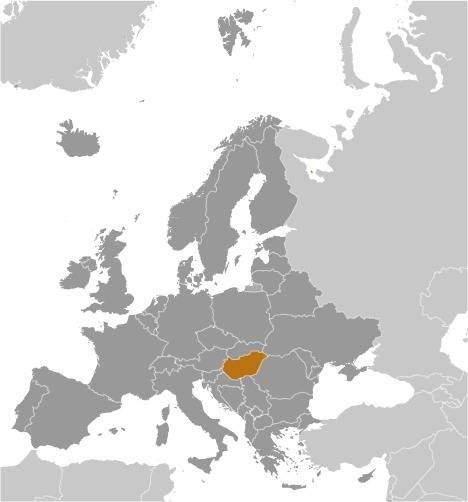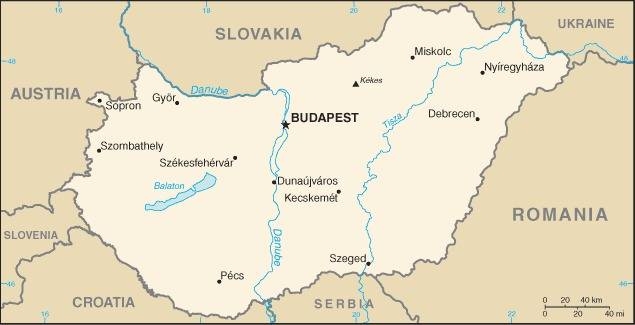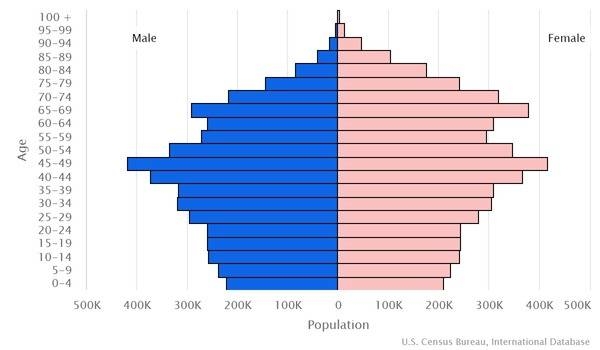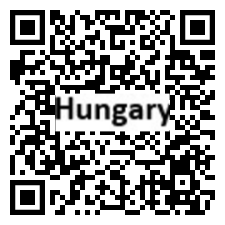Country Summary




Introduction
Background
Hungary became a Christian kingdom in A.D. 1000 and for many centuries served as a bulwark against Ottoman Turkish expansion in Europe. The country fell under communist rule following World War II. Hungary held its first multiparty elections in 1990 and initiated a free market economy. It joined NATO in 1999 and the EU five years later.
Geography
Area
total: 93,028 sq km
land: 89,608 sq km
water: 3,420 sq km
Climate
temperate; cold, cloudy, humid winters; warm summers
Natural resources
bauxite, coal, natural gas, fertile soils, arable land
People and Society
Population
9,699,577 (2022 est.)
Ethnic groups
Hungarian 85.6%, Romani 3.2%, German 1.9%, other 2.6%, unspecified 14.1% (2011 est.)
Languages
Hungarian (official) 99.6%, English 16%, German 11.2%, Russian 1.6%, Romanian 1.3%, French 1.2%, other 4.2%; note - shares sum to more than 100% because some respondents gave more than one answer on the census; Hungarian is the mother tongue of 98.9% of Hungarian speakers (2011 est.)
Religions
Roman Catholic 37.2%, Calvinist 11.6%, Lutheran 2.2%, Greek Catholic 1.8%, other 1.9%, none 18.2%, no response 27.2% (2011 est.)
Population growth rate
-0.3% (2022 est.)
Government
Government type
parliamentary republic
Capital
name: Budapest
Executive branch
chief of state: President Katalin NOVAK (since 10 May 2022)
head of government: Prime Minister Viktor ORBAN (since 29 May 2010)
Legislative branch
description: unicameral National Assembly or Orszaggyules (199 seats; 106 members directly elected in single-member constituencies by simple majority vote and 93 members directly elected in a single nationwide constituency by party-list proportional representation vote, using the d’Hondt method; members serve 4-year terms)
Economy
Economic overview
high-income EU and OECD economy; decreasing government spending; increasing judicial independence concerns; flat income taxation; increasingly dependent on energy imports; strong tourism and automotive manufacturing
Real GDP (purchasing power parity)
$302.32 billion (2020 est.)
Real GDP per capita
$31,000 (2020 est.)
Agricultural products
maize, wheat, milk, sunflower seed, barley, rapeseed, sugar beet, apples, pork, grapes
Industries
mining, metallurgy, construction materials, processed foods, textiles, chemicals (especially pharmaceuticals), motor vehicles
Exports
$123.83 billion (2020 est.)
Exports - partners
Germany 27%, Romania 5%, Italy 5%, Slovakia 5% (2019)
Exports - commodities
cars and vehicle parts, packaged medicines, spark-ignition engines, video displays, broadcasting equipment (2019)
Imports
$120.25 billion (2020 est.)
Imports - partners
Germany 25%, China 6%, Poland 6%, Austria 6%, Czechia 5%, Slovakia 5%, Italy 5%, Netherlands 5% (2019)
Imports - commodities
cars and vehicle parts, integrated circuits, packaged medicines, broadcasting equipment, crude petroleum (2019)
Exchange rates
forints (HUF) per US dollar -
Page last updated: Thursday, May 12, 2022
